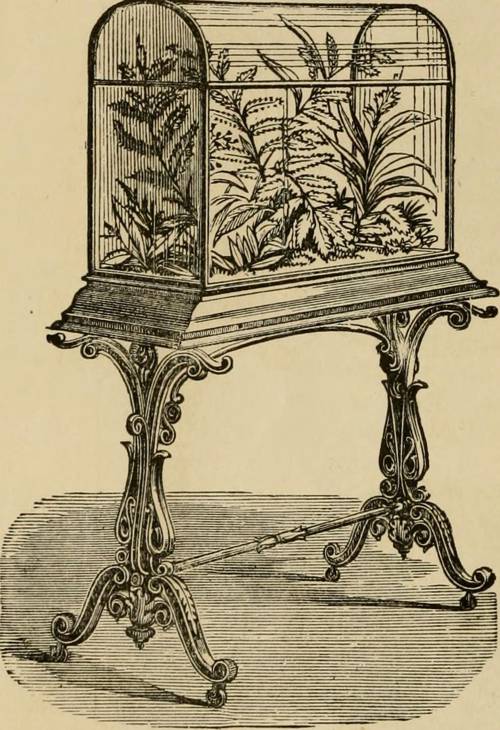
FAQ About Anthropogenic Effects on Indoor Plant Growth

What are anthropogenic effects on indoor plant growth?
Anthropogenic effects refer to the impact human activities and modifications have on indoor plant growth. These include changes in air quality, light exposure, humidity, temperature, and the presence of pollutants. Understanding these effects can help optimize conditions for indoor plant health.

How does air quality affect indoor plant growth?
Indoor air quality can significantly influence plant health and growth. Pollutants such as tobacco smoke, dust, volatile organic compounds (VOCs), and other airborne chemicals can damage plants by interfering with photosynthesis and respiration. High ventilation and air filtration can mitigate these effects.

Why is light important for indoor plant growth?
Light is crucial for plant photosynthesis, which is the process by which plants convert light energy into chemical energy. Indoor plants require adequate exposure to natural or artificial light to grow properly. Insufficient light can lead to spindly growth and leaf drop, while too much direct sunlight can scorch leaves.

What role does humidity play in indoor plant environments?
Humidity affects a plant's ability to transpire and absorb water and nutrients. Most indoor plants thrive in environments with moderate humidity (around 40-60%). Low humidity can cause leaf curling and browning, whereas high humidity can lead to mold growth and pest issues.

How can urban environments impact indoor plant growth?
Urban environments often present challenges like poor lighting, fluctuating temperatures, and pollutants that can affect plant growth. However, some plants are better adapted to urban conditions and can be selected for robustness against these stressors.

What are common pollutants in indoor environments that affect plants?
Common indoor pollutants include VOCs from paints and cleaning supplies, carbon monoxide from heating systems, formaldehyde from furniture, and dust particles. These substances can harm plants by obstructing photosynthesis and damaging leaf structures.

Can indoor plants help improve air quality?
Yes, indoor plants can improve air quality by absorbing pollutants, releasing oxygen, and increasing humidity. Certain plants like snake plants, spider plants, and peace lilies are particularly effective at filtering out VOCs and other toxins from the air.

How does temperature influence indoor plant growth?
Temperature affects metabolic processes in plants. Most indoor plants prefer temperatures between 65-75°F (18-24°C) during the day and slightly cooler at night. Extreme temperatures can stress plants, leading to stunted growth or even death.

What adaptations do plants have for indoor growth?
Many indoor plants have adaptations such as tolerance to low light conditions, ability to store water, and resilience to variable humidity levels. These adaptations enable them to thrive in the typically less-than-ideal conditions of indoor environments.

What artificial settings can influence indoor plant growth?
Artificial settings such as grow lights, humidifiers, and controlled temperature environments can significantly affect plant growth. These technologies allow for the customization of growing conditions to meet the specific needs of various plant species.

How does artificial lighting compare to natural sunlight for plants?
Artificial lighting can be an effective substitute for natural sunlight, especially in environments with limited natural light. LED grow lights are commonly used as they can provide the full spectrum of light necessary for photosynthesis, but they must be used appropriately regarding intensity and duration.

Are there specific types of plants best suited for indoor urban environments?
Several plants are well-suited for indoor urban environments due to their adaptability to lower light conditions and resistance to pollution. Examples include pothos, snake plants, ZZ plants, and succulents, which require minimal maintenance and are hardy under various conditions.

How do climate control systems in buildings affect plant growth?
Climate control systems regulating temperature and humidity can create stable environments for indoor plants, promoting healthy growth. However, air conditioning systems may reduce humidity levels, necessitating additional measures like misting or the use of humidifiers to maintain optimal conditions.

Can noise pollution affect indoor plant growth?
While noise pollution primarily affects humans and animals, some studies suggest it could indirectly impact plant growth by affecting levels of stress-related compounds within the plant. However, more research is needed to fully understand this potential relationship.

What role do artificial soil and fertilizers play in indoor plant growth?
Artificial soil mixes and fertilizers provide essential nutrients that may be lacking in indoor conditions. They are designed to improve soil structure, facilitate drainage, and supply specific nutrients needed for plant growth, especially in urban settings where natural soil quality may be poor.

How can human touch and interaction affect indoor plants?
Human interaction can benefit indoor plants by stimulating growth and reducing pest infestations when the plant is gently cleaned or pruned. Additionally, talking or playing music around plants has shown mixed results, with some evidence suggesting it may enhance growth, though this remains debated.

What are the best practices for watering indoor plants in an urban environment?
Watering indoor plants optimally requires understanding each plant's needs since overwatering and underwatering can both harm plants. Generally, ensure proper drainage to avoid waterlogging and monitor soil moisture levels before watering. Using filtered water can help minimize the buildup of salts and chemicals.

How can technology be used to monitor and optimize plant growth indoors?
Technology such as smart sensors and apps can monitor soil moisture, light levels, temperature, and humidity, providing data-driven insights to optimize plant care. Automated irrigation systems and smart grow lights can adjust conditions based on these insights, enhancing indoor plant growth.

What challenges do skyscraper buildings present for indoor plant growth?
Skyscraper buildings often have limited natural light exposure and can experience significant temperature variations. However, utilizing modern technologies like reflective panels and advanced climate control systems can help mitigate these issues, allowing for the successful cultivation of plants in such environments.

How does indoor plant care vary seasonally in urban settings?
Seasonal changes can affect indoor conditions such as temperature and light availability, necessitating adjustments in plant care. During winter, reduced daylight may require additional artificial lighting, while fluctuations in indoor heating could demand adjustments in watering and humidity maintenance.
